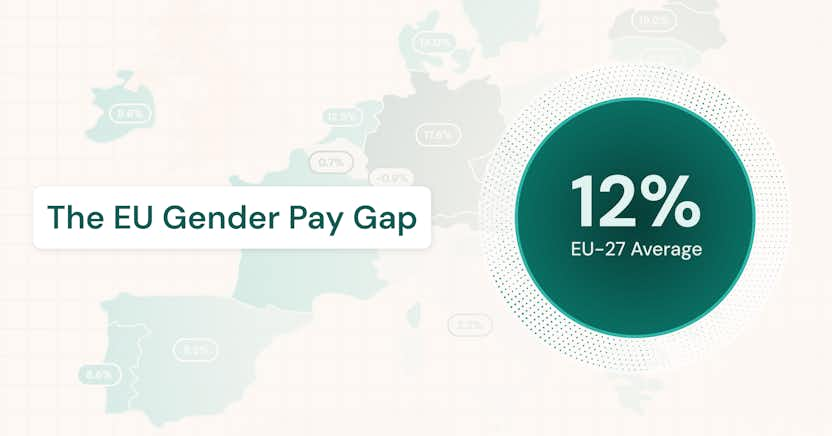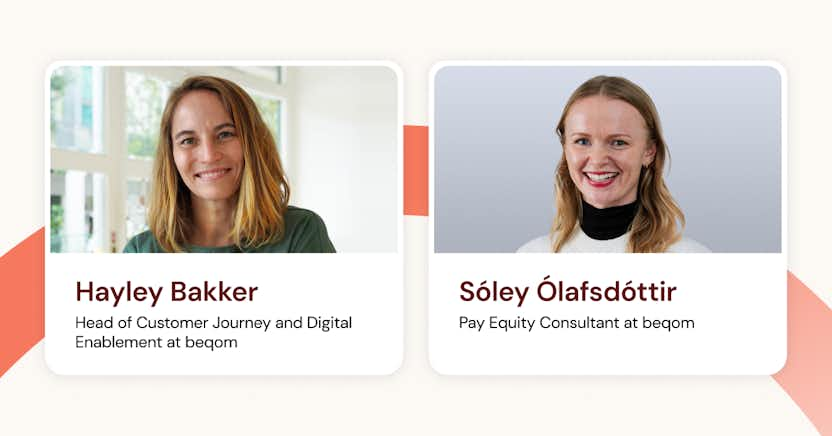7 Ways to Improve Your Company’s Diversity, Equity, and Inclusion Strategy

Learn more about the following beqom products
What can leadership teams do to address diversity, equity, and inclusion in ways that can enhance workplace culture? We compiled a number of straightforward tips that can help your organization improve its DEI strategy and address any issues you might be facing.
1. Monitor for possible diversity issues
What might be considered “normal” in many workplace cultures may possibly alienate a section of the workforce. For instance, Ruchika Tulshyan, author of Inclusion on Purpose, gave the example of companies that routinely host social events that include alcohol. Such occasions can exclude employees whose religion, culture, or health prevent them from drinking.
The best approach is to hold frequent group listening sessions and provide opportunities for private one-to-one conversations. In group meetings, you can identify individuals who dominate as well as those who might be excluded or undermined.
2. Listen to your employees
Gather the perspectives of a wide range of employees regarding the company’s DEI initiatives. Are they constructive? Do they make a difference? What could be done better?
Once you gain this feedback, it’s important to act on it and highlight to employees the steps you are taking in response. Applaud team members for their input and share the positive changes with their colleagues.
3. Review the behavior of your management team
Are there toxic leaders who don’t make their team feel valued or who exhibit bias in your organization? These very leaders are why good employees resign, even if they don’t have a new job lined up! Don’t shy away from having a straightforward conversation with any manager showing toxic tendencies and give them an opportunity to change.
Remember, the best thing a leader can do is lead by example. Leaders have a responsibility to establish the tone of the organization and maintain it. They also need to make sure managers follow suit and that next-level leaders have the training to do the same.
4. Foster a sense of community
Does your company have a genuine, compelling DEI program? Do your leaders build team spirit and camaraderie? This is something that has become increasingly difficult to do with the expansion of remote working since the pandemic, at least using traditional methods.
However, there are several ways to foster a sense of community even in a remote or hybrid workplace model. To get started, designate time during the week for employees to get together for an event that is not related to work. This way, they can share information about what’s going on in their lives such as hobbies, social activities, etc. Even if some (or all) team members are working remotely, you can have a virtual “happy hour” to make them feel included.
A Continuous Performance Management (CPM) system that supports and encourages regular peer feedback can also go a long way toward fostering engagement and belonging.
5. Allow your team to open up
Promote an open culture whereby everyone feels like they can freely give feedback without fear of adverse reactions. An atmosphere in which individuals can openly and honestly express their views not only helps eliminate bias but also leads to constructive debates that can ultimately boost the business.
Clear executive support for a “safe space” culture, along with leadership by example, will help to set the tone.
6. Make sure your pay practices are equitable
There is no equity without pay equity. Analyze your pay practices to determine whether there is any measurable bias based on gender, race, sexual orientation, or other protected categories. This requires compensation technology that supports equal pay analysis and compliance, but it’s worth it. Unfair pay can lead to legal issues as well as unwanted attrition. On the other hand, a reputation for fair pay can enhance your employer brand.
Pay equity analysis can identify pay gaps and produce actionable intelligence on how you can fix any issues before they become problems. Addressing these issues proactively will help retain and motivate your workforce, and reduce legal risks.
7. Prioritize diversity from beginning to end
Organizations need to be conscious of the need to train for diversity. It’s not going to happen by itself. This training should happen throughout the year, not just as one annual exercise. This training should be carried out at all levels within the organization, from bottom to top.
Integrating DEI practices into every aspect of your business should include hiring, training, and performance reviews, all the way through to exit interviews. A comprehensive approach and an all-in strategy are the only ways to succeed.
Making culture happen
Culture doesn’t happen by accident, it needs to be designed, enabled, and nurtured. Companies that are serious about DEI should ensure they have the tools in place to support a diverse, equitable, and inclusive culture. Performance management and rewards systems are a key part of creating a human-centric culture, built on engagement, connection, and fairness.
Are diversity, equity, and inclusion issues currently impacting your business? We’d love to have a chat to help you discover more about how beqom can help. Get in touch here.








